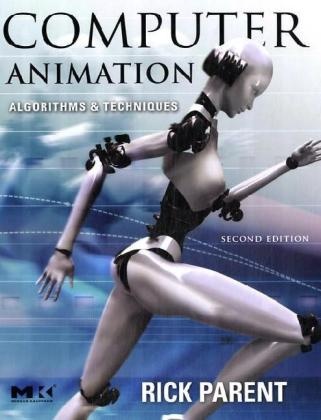Read more
Focuses on the developments in animation technology, including fluid animation, human figure animation, and soft body animation. This book covers topics such as quaternions, natural phenomenon, facial animation, and inverse kinematics. It includes discussions of Maya scripting and the Maya C++ API and programming on real-time 3D graphics hardware.
List of contents
1. Introduction
1.1 Perception
1.2 The Heritage of Animation
1.3 Animation Production
1.4 Computer Animation Production
1.5 A Brief History of Computer Animation
1.6 Chapter Summary
References
2. Technical Background
2.1 Spaces and Transformations
2.2 Orientation Representation
2.3 Chapter Summary
References
3. Interpolation
3.1 Interpolating Values
3.2 Controlling the Motion of a Point Along a Curve
3.3 Interpolation of Orientations
3.4 Working with Paths
3.5 Chapter Summary
References
4. Interpolation -Based Animation
4.1 Key-Frame Systems
4.2 Animation Languages
4.3 Deforming Objects
4.4 3D Shape Interpolation
4.5 Morphing (2D)
4.6 Chapter Summary
References
5. Kinematic Linkages
5.1 Hierarchical Modeling
5.2 Forward Kinematics
5.3 Inverse Kinematics
5.4 Chapter Summary
References
6. Motion Capture
6.1 Motion Capture Technologies
6.2 Processing the Images
6.3 Camera Calibration
6.4 3D Position Reconstruction
6.5 Fitting to the Skeleton
6.6 Output from Motion Capture Systems
6.7 Manipulating Motion Capture Data
6.8 Chapter Summary
References
7. Physically Based Animation
7.1 Basic Physics - A Review
7.2 Spring Meshes
7.3 Particle Systems
7.4 Rigid Body Simulation
7.5 Enforcing Soft and Hard Constraints
7.6 Chapter Summary
References
8. Fluids: Liquids & Gases
8.1 Specific Fluid Models
8.2 Computational Fluid Dynamics
8.3 Chapter Summary
References
9. Modeling and Animating Human Figures
9.1 Overview of Virtual Human Representation
9.2 Reaching and Grasping
9.3 Walking
9.4 Getting Dressed Up
9.5 Chapter Summary
References
10. Facial Animation
10.1 The Human Face
10.2 Facial Models
10.3 Animating the Face
10.4 Lip-Sync Animation
10.5 Chapter Summary
References
11. Modeling Behavior
11.1 Knowing the Environment
11.2 Aggregate Behavior
11.3 Primitive Behaviors
11.4 Modeling Intelligent Behavior
11.5 Crowd Management
11.6 Chapter Summary
References
12. Special Models for Animation
12.1 Implicit Surfaces
12.2 Plants
12.3 Subdivision Surfaces
12.4 Chapter Summary
References
App A. Rendering Issues
A.1 Double Buffering
A.2 Compositing
A.3 Displaying Moving Objects: Motion Blur
A.4 Drop Shadows
A.5 Billboarding and Impostors
A.6 Summary
References
App B. Background Information and Techniques
B.1 Vectors and Matrices
B.2 Geometric Computations
B.3 Transformations
B.4 Denevit and Hartenberg Representation for Linked Appendages
B.5 Interpolating and Approximating Curves
B.6 Randomness
B.7 Physics Primer
B.8 Numerical Integration Techniques
B.9 Standards for Moving Pictures
B.10 Camera Calibration
References
Report
"An invaluable resource for anyone interested in computer animation programming or for anyone who simply wants to get under the hood of their favorite animation application." -Mike Caputo, President, Animation Bureau

